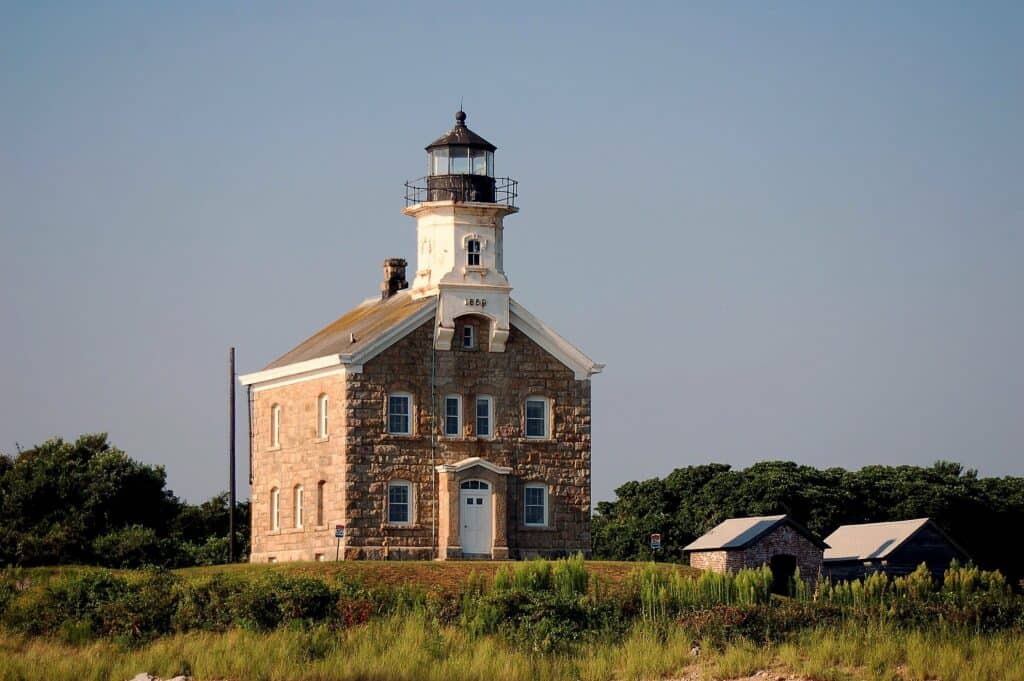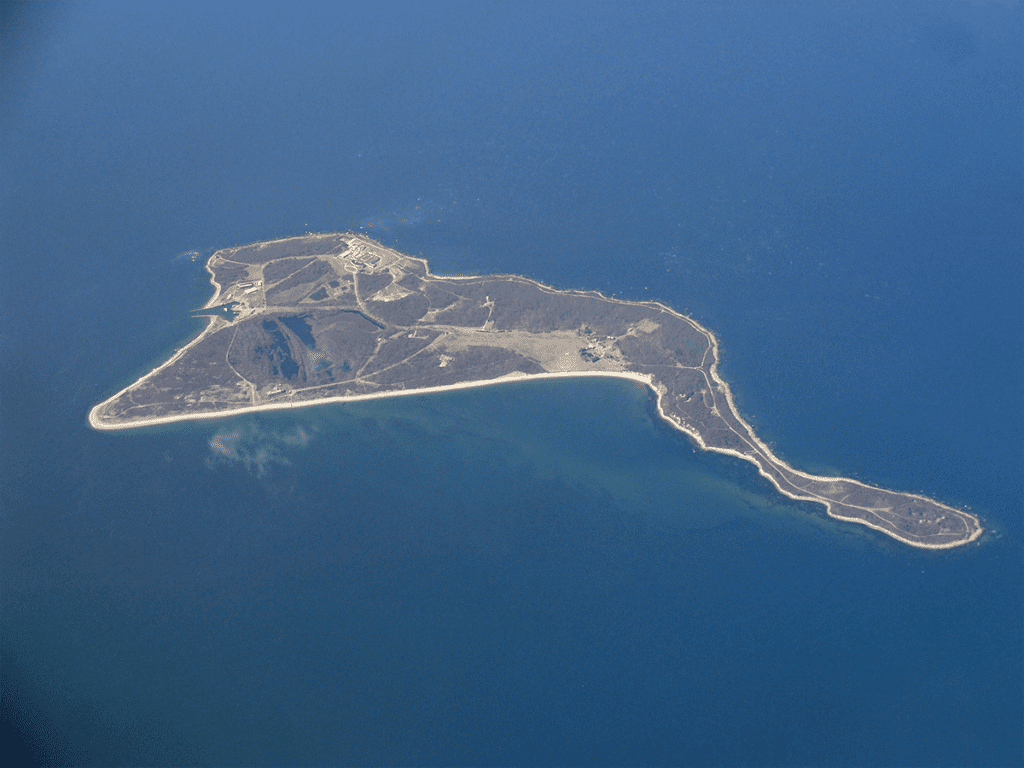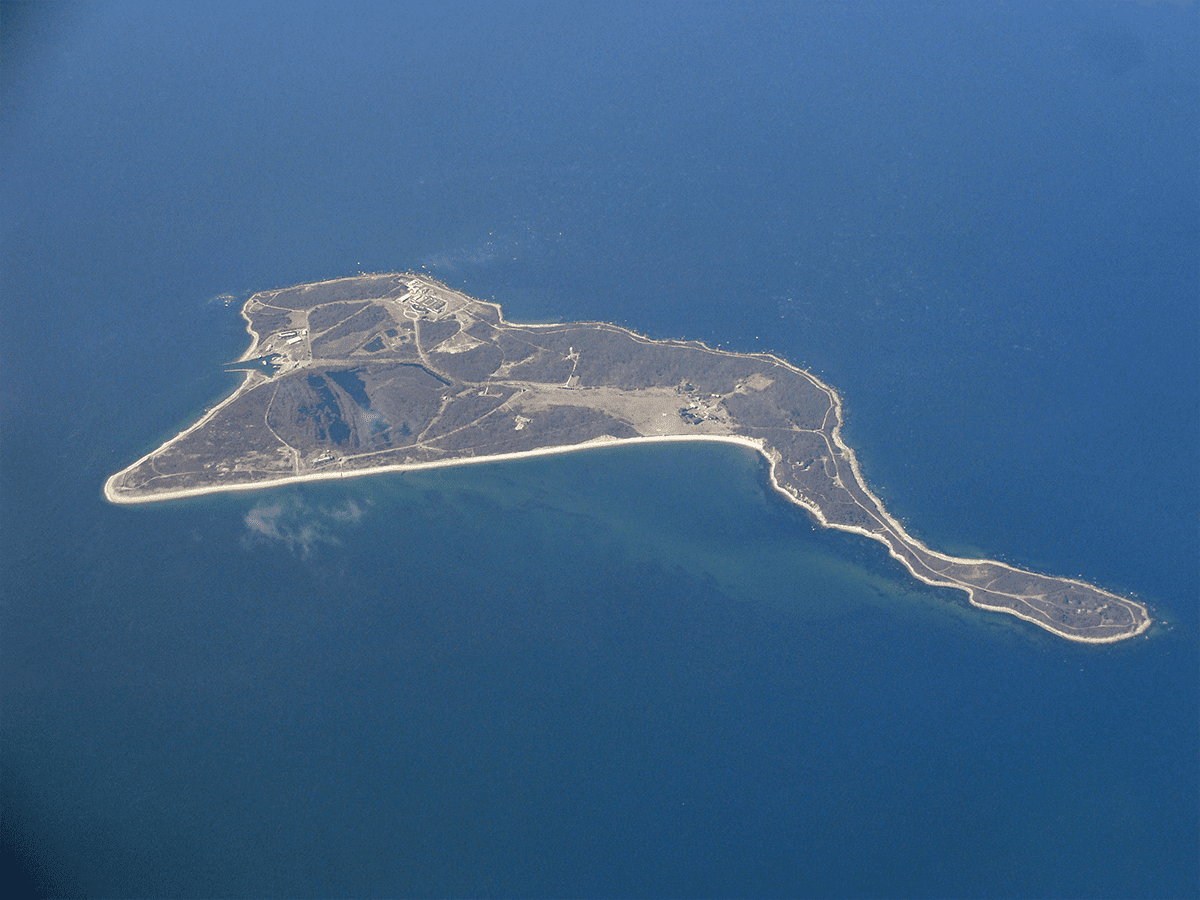U.S. General Services is offering the island for sale for research, education, and conservation use only.
Looking for a place on the North Fork and frustrated by the lack of listings? How about 9.5 acres in Orient and an 840-acre private island in the middle of Gardiner’s Bay just east of Orient Point? The property includes a lighthouse built in 1869 and listed on the National Register of Historic Places, as well as buildings and battery stations from a military fort active during the Spanish-American and both World Wars. Also included: a 55,000 square foot glass and concrete administration building constructed in 1994, 12 miles of roadway, an on-site power plant and a wastewater decontamination plan. Let’s not overlook the private harbor facilities in Orient together with the ferry boats. Interested? Contact the U.S. General Services Administration and tell them you’re interested in buying Plum Island.

Lying under a blanket of the beach plums for which it was named, Plum Island was first mapped by Dutch trader and explorer Adriaen Block. Block, under sail for the Dutch East India Company, is credited with also discovering neighboring Block Island. The Montaukett tribe called Plum Island “Manittuwond” — meaning “the island to which we go to plant corn”. Local historians claim that the Montauketts sold Plum Island to an Englishman in 1659 for a coat and some tools.
For over 300 years, Plum Island played a role in colonial and American military history. It figured prominently in the Pequot War (1637-1639), considered historically to be the first sustained conflict between Native Americans and Europeans in northeastern North America. Local Revolutionary War lore claims that the first cannon fire exchanged between the Continental Army and the British during the Revolution took place on Plum Island. In 1897, the U.S. government used land on Plum Island to build Fort Terry. Outfitted with concrete gun batteries to attack enemy ships, Fort Terry operated as a part of the chain of fortifications guarding the entrance to Long Island Sound during the Spanish-American War and World War I. During World War II, the post was used as a training facility and supply depot as well as a look-out for German U-boats and planes.
In 1952, the U.S. Army Chemical Corps used the site to research germ, biological and radiological warfare; in 1954, the USDA assumed control of the Island as an animal disease research center called Plum Island Animal Disease Laboratory (later Plum Island Animal Disease Center or PIADC). PIADC’s mandate is to protect America’s livestock from animal diseases such as foot-and-mouth disease; PIADC is still the only laboratory in the nation permitted to work with the live foot-and-mouth disease virus. In an abundance of caution and to prevent the spread of disease, any deer that swim to Plum Island are killed and destroyed — as are any other mammals found inhabiting the Island.

Since 2003, PIADC has been under the direction of the U.S. Department of Homeland Security. In 2008, Homeland Security directed GSA to offer Plum Island for sale because of the planned move of PIADC’s research operations to a new facility in Manhattan, Kansas; seen as a rare opportunity, Plum Island drew the attention of such real estate developers as the Trump Organization. In response to public outcry, U.S. Representative Lee Zeldin drafted language in a 2019 Department of Homeland Security appropriations bill limiting the sale of Plum Island “for the purposes of research, education, and conservation”; the Town of Southold also rezoned the Island restricting resort or luxury home developments and preserving most of the open space.
So, if you’re in the market to open a school or lab, maybe you should be taking a look at Plum Island…








